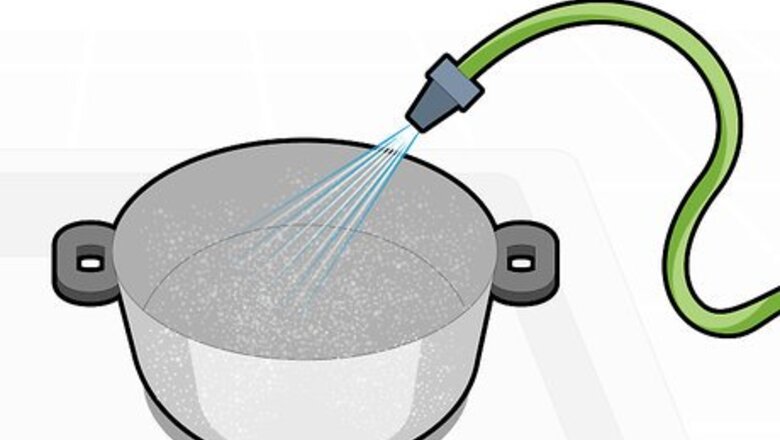
views
- Rinse dust and debris off the aluminum surface with plain water before trying to remove oxidation.
- Soak a cloth in vinegar or lemon juice and wipe the aluminum surface. Use a bristle brush to scrub the discolored areas and remove oxidation.
- Apply a commercial aluminum cleaner or metal polishing paste for stubborn areas that don't respond to natural cleaners.
Cleaning the Aluminum
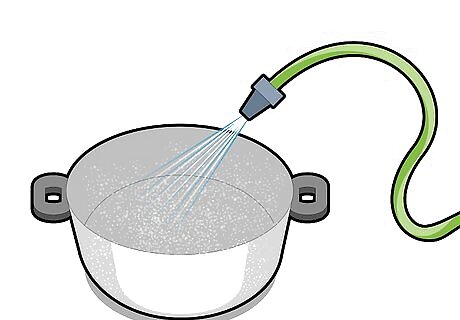
Rinse the aluminum surface. Begin the process of cleaning oxidized aluminum by rinsing the aluminum to remove surface dust or debris. If you are cleaning an aluminum pot or pan, rinse the pan under a strong jet of water. If you are cleaning aluminum wheels or house siding, use a damp cloth to wipe the aluminum or a hose to it with water.
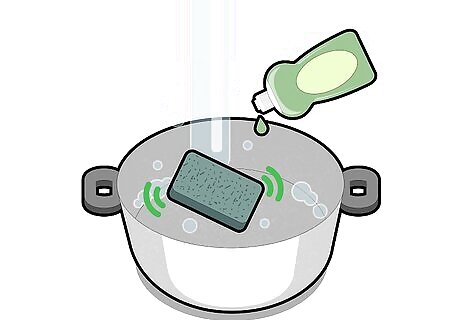
Wash thoroughly with soap and water. If your aluminum looks clean after rinsing with water, move onto cleaning the aluminum with natural cleaners. If it is still looking dirty or there is debris caked up over the oxidation, wash the aluminum surface with hot water, soap, and a soft-bristled brush or scratchy pad.
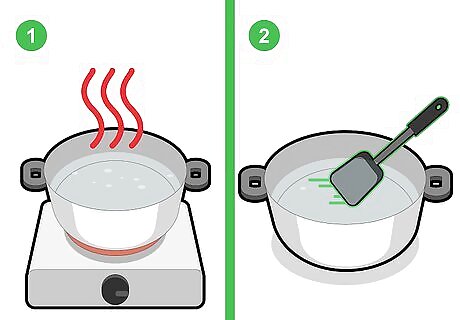
Deep clean the aluminum. To remove stubborn dirt or food buildup on your aluminum, use hot water and a flat edge to scrape buildup off of the surface. If you are cleaning an aluminum pot, place a few inches of water in the bottom, put the pot on the stove, and bring it to a boil for about five minutes. Then take the pot off the stove, wait for the water to cool slightly and use a flat-edge spatula to scrape off the buildup with the water still inside. If you are washing aluminum wheels or siding, soak a cloth in hot water and hold it against the buildup to loosen it, then use a flat spatula to scrape it off.
Using Natural Cleaning Agents

Use vinegar. If you are cleaning an aluminum pot, fill the pot with water, then add 2 tablespoons (29.57 ml) for every quart of water. Bring the water and vinegar to a boil and let the boil roll for 15 minutes, then pour out the liquid. You may have to do this process a few times to eliminate all oxidation. If you are cleaning a small aluminum object, bring water and vinegar to a boil inside a pot, then take the pot off the heat and drop the aluminum object inside. Let it soak for 15 minutes, then take it out and rinse it off. If you are cleaning a large aluminum surface, soak a cloth in vinegar, then wipe it across the oxidation. Scrub with a soft-bristled brush, then wipe away the vinegar and lifted oxidation with a damp cloth. Don’t use abrasive materials like steel wool or sandpaper to scrub the surface of the aluminum. While this can scrape away oxidation, it also will scratch the surface of the aluminum and make oxidation harder to remove in the future.

Use lemon juice. Do the same cleaning process as you did with vinegar, this time with lemon juice. If you are cleaning a small surface, you can also simply rub sliced lemon over the oxidized surface and wipe away. Dip the lemon slice in some salt to add abrasiveness if you are cleaning a particularly tough patch of oxidation. You can find small containers of lemon juice at most grocery stores, which is an easier alternative than individually juicing lemons.
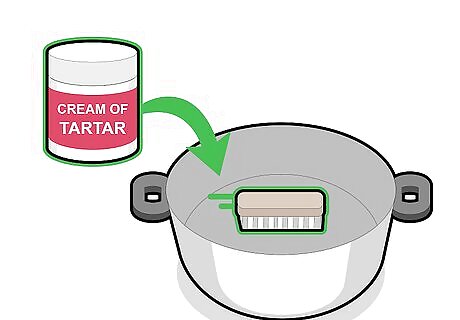
Clean with cream of tartar. Use the same methods as you used with lemon and vinegar, this time using cream of tartar to clean off the oxidation. If you are cleaning a large area of oxidation, wet a cloth, apply a small amount of cream of tartar to it and rub the cloth over the surface. Then rub the cream of tartar away with a soft-bristled brush.

Cook something acidic. If you are cleaning out an aluminum pot of oxidation, you can simply cook something acidic in it such as tomato, sliced apple, sliced lemon or rhubarb. Place the pot on the stove, add one of these acidic foods and enough water to cover the oxidized areas. Bring the pot to a boil, then take it off the heat and pour everything out. Since the oxidation will come off of the pot, you should not eat the foods you are cooking.
Using Commercial Cleaning Products
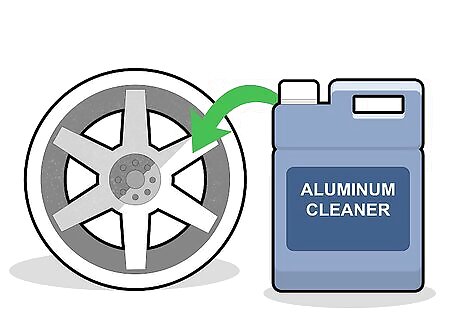
Apply aluminum cleaners. There are many cleaners on the market specifically formulated to clean aluminum. After removing as much oxidation as you can by using the methods above, put on gloves and apply the commercial aluminum cleaner according to its packaging. Only use commercial cleaners that are aluminum specific. Many commercial cleaners contain ammonia, trisodium phosphate and other chemicals that can be harmful to aluminum.
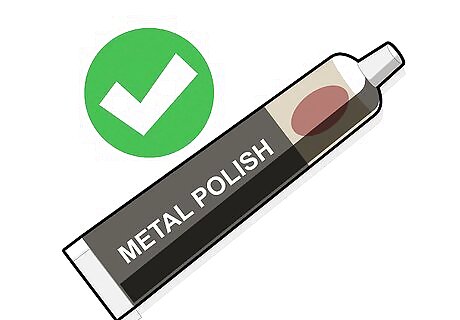
Use a metal polishing paste. Aside from making a surface shiny, polishing pastes can also clean the surface of aluminum and take off oxidation. Purchase a metal polishing paste that can safely be used on aluminum and refer to its package to apply it to the oxidized area.
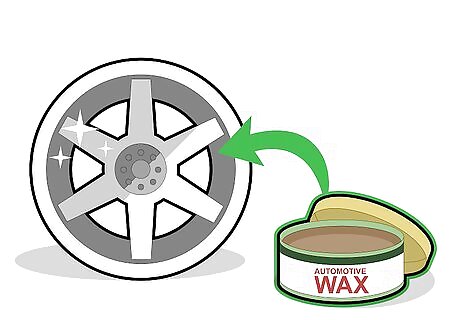
Apply wax after cleaning. Depending on what kind of aluminum object or surface you are cleaning, you may want to coat it with automotive wax after cleaning to help prevent oxidation in the future. Use wax on surfaces like a car or bicycle wheels, house siding, or outdoor furniture, but don’t use it on aluminum pots or kitchenware.















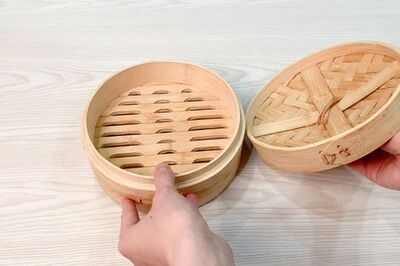


Comments
0 comment